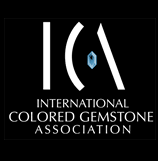The Erongo Region Small Scale Miners Association (ERSSMA) has received N$8,3 million from the European Commission (EC) to enable them to effectively mine tourmaline gemstones in the region.
The money was channeled through the National Planning Commission to the Erongo Regional Council, which also contributed 5 percent towards the N$8,3 million.
The Erongo Region's stakeholder’s forum, including some mines in the region and constituency councilors, mines ministry, Geological Survey of Namibia and the small miners themselves, approached the EC on behalf of the small miners and successfully secured the grant.
The small miners are currently mining the tourmaline stones without proper equipment using rudimentary equipment such as 'koevoets' and hammers for the past 13 years or more, while some of the equipment is even handmade.
Some of the self-employed miners, who come from other parts of the country, have been camping along the Karibib-Otjimbingwe gravel road and walk to the nearby mountains - as far as 20 km - every morning to mine the gemstones.
The gems are mined at privately owned farm Neue Schwaben.
"We are working under harsh conditions without water. We use water that gathers in the holes that we dig for our daily use," said August Tsowaseb, a miner at the site.
Tsowaseb said they need machinery, especially to clean up the area and move some of the earth they dig out.
"It is good business if you are lucky. Sometimes you can get up to N$6000," Tsowaseb added.
The Deputy Director for Planning at the Erongo Regional Council, Vikurupa Kavendjii, said the regional council will buy equipment such as jackhammers and compressors for the small miners, once everything is sorted.
Some equipment has been bought already, while a consultant is looking at the small miners' 'shopping list', Kavendjii said.
He also added that the stake holder’s forum looked at the basic needs, marketing and processing needs of the small miners.
"I think small mining is becoming a major player. We realize some stones are even more valuable than diamonds."
The small miners now also receive training in semi-precious stones, cutting and polishing as well as in business and marketing areas.
"Sometimes they find blue tourmaline stones and don't even know their value," added Kavendjii.
The council is also planning to expose the small miners to a highly specialized country in small-scale mining such as India, in future.
The stakeholders forum has also developed a website, in order to market the semi-precious gemstones.
Kavendjii said the council is planning to build a proper marketing centre 30 km outside Usakos on the Swakopmund road, where a number of small miners are already showcasing their products.
The small miners might be asked to form cooperatives in order to use some of the large equipment such as compressors in groups.
A small rental fee will be charged for the equipment.
Kavendjii said a fund will be set up from this money to maintain and service the equipment.
About 1600 small miners, in all the constituencies where small-scale mining is taking place in the region, will benefit from the equipment.








